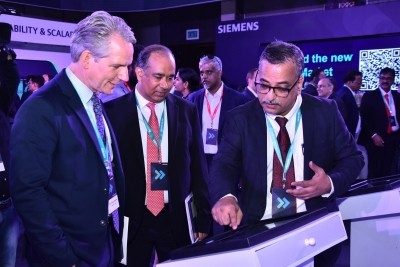
New Delhi, As the Indian government pushes for electric vehicle (EV) adoption and installing the public charging infrastructure, German industrial manufacturing major Siemens has stressed that it has proven capabilities to help the government realise its passenger EV mobility dream too.
The company is currently working on the commercial EV mobility side in India, working with leading players like Ashok Leyland's EV arm Switch Mobility.
Sunil Mathur, Managing Director and CEO, Siemens Limited, told IANS that they are continuously in touch with the government as well as multiple stakeholders.
"The direction of the government is very clear, and the performance-linked incentive (PLI) scheme is also very consequent to their strategy of driving e-mobility. Now is the time for the Indian industry to get its act together," Mathur said.
According to him, on the commercial EVs, there's definitely a lot of traction happening in India.
"On passenger vehicles, there are a couple of other companies who have entered the charging infrastructure space. We have not entered that space currently on the charging side. But we have the required capabilities for that market too," Mathur informed.
According to Dr Peter Koerte, Chief Technology and Strategy Officer, Siemens AG, the company has charging infrastructure outside India.
"We are providing high-performance charging all the way to 250 KW roadside charging when you travel a longer distance. We provide solutions for destination charging, workplace charging and home charging, etc," Koerte told IANS.
In India, the company has laid its eyes first on the commercial EV business first, but "what I am trying to convey is that we have capabilities on the passenger side too," Koerte emphasised.
Siemens India has already signed an MoU with Switch Mobility to deliver cost-effective e-mobility solutions for commercial electric vehicle customers.
Last year, ride-hailing company Ola partnered with Siemens to rapidly build its electric vehicle manufacturing facility.
Ola had access to Siemens' integrated Digital Twin design and manufacturing solutions to digitalise and validate product and production ahead of actual operations.
According to Mathur, the bigger challenge in the passenger EV mobility is paying infrastructure for the entire drivetrain, propulsion systems and the rest.
"That is the government's vision and I think industry is jumping into that. We are talking to a couple of players who are actually going to be manufacturing all this, and there is a lot of pressure on them from the government to start delivering. So, I am hopeful that it will happen soon," said Mathur.
The company has a unique project called 'Digital Twin' which is a virtual representation of a physical product or process, used to understand and predict the physical counterpart's performance characteristics.
'Digital twins' are used throughout the product lifecycle to simulate, predict, and optimise the product and production system before investing in physical prototypes and assets.
According to Mathur, nearly 600 mid to small companies in India are already engaging with 'Digital Twin' product to eliminate the need for physical prototypes, reducing development time, and improving quality of the finalised product or process.
"A large automotive company cannot achieve the levels of productivity unless all the ancillary players downstream are also in the same loop, so to speak," said Mathur.
"We are talking to the players in tier 2, 3 and 4 towns and cities, helping them become much more productive with the 'Digital Twin' solution," he mentioned.


.jpeg)

